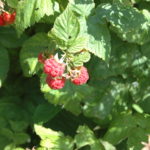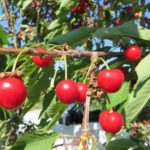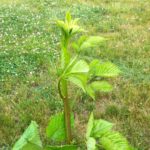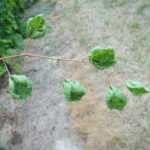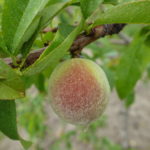Indiana Horticultural Society Field Day June 28, 2017 Tuttle Orchards 5717 North 300 West Greenfield IN 46140 Wednesday, June 28 9:00am-4:00 pm Joe Becovitz-Office of State Chemist: worker protection standards Fruit Production: tour of apple plantings including new orchards planted in 2014. Vegetable Production: tour of vegetable crop plantings, high tunnels, and chemical storage facilities.[Read More…]
Bramble Fruit
Japanese beetles are out and feeding. I saw a large population on the raspberries at the Meigs Farm on Monday. Although this pest isn’t as severe as it was a number of years ago, it can still cause plenty of problems. Small fruit growers should monitor their crops and control the beetles if necessary. Japanese[Read More…]
Indiana Horticultural Society Field Day June 28, 2017 Tuttle Orchard Greenfield, IN More details to come but mark the date on your calendar and plan to attend Indiana Winery and Vineyard Association Summer Meeting and Vineyard Tour July 18-19, 2017 Brown County Inn, Nashville IN More details to come, but mark the date on your calendar[Read More…]
In Lafayette, fruit crops are progressing normally. Strawberry harvest is winding down and quite of bit of leaf spot is showing up. We have our first ripe fruit on summer red raspberries. All brambles are showing signs of freeze damage from the mid-March event. Weak and collapsing fruiting laterals are common. Grapes are from late[Read More…]
One of the most important management practices for production of blackberries and black raspberries is summer tipping of the primocanes. This practice removes the apical dominance of the shoot tip, resulting in several lateral branches below the tip, and a stronger primocane. Next year’s crop will primarily be produced from buds on the lateral branches,[Read More…]
The Office of the Indiana State Chemist has filed a Notice of Intent to Adopt a New Rule that will make most dicamba containing herbicides Restricted Use Products (RUP). This designation will allow the OISC to track sales of those herbicides. As many specialty crop growers know, dicamba is one of the growth regulator herbicides[Read More…]
Tipping of primocanes (new vegetative canes from the ground) is an important management practice for summer bearing blackberries and black raspberries. Tipping the new primocanes causes lateral branching and most of the fruit production next year will be from buds on those lateral branches rather than buds off the main cane. Tipping also helps increase[Read More…]
